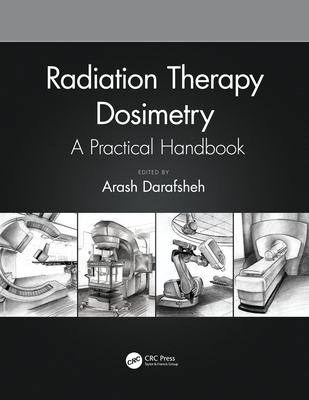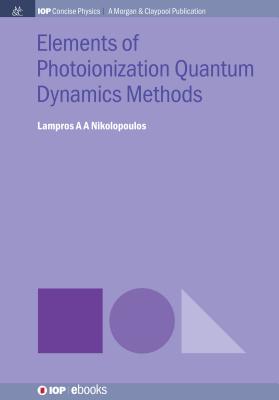Radiation Sensors with 3D Electrodes
暫譯: 具有三維電極的輻射感測器
Da VIà, Cinzia, Dalla Betta, Gian-Franco, Parker, Sherwood
- 出版商: CRC
- 出版日期: 2019-01-25
- 售價: $6,620
- 貴賓價: 9.5 折 $6,289
- 語言: 英文
- 頁數: 226
- 裝訂: Hardcover - also called cloth, retail trade, or trade
- ISBN: 149878223X
- ISBN-13: 9781498782234
-
相關分類:
感測器 Sensor
海外代購書籍(需單獨結帳)
商品描述
Written by the leading names in this field, this book introduces the technical properties, design and fabrication details, measurement results, and applications of three-dimensional silicon radiation sensors. Such devices are currently used in the ATLAS experiment at the European Centre for Particle Physics (CERN) for particle tracking in high energy physics.
These sensors are the radiation hardest devices ever fabricated and have applications in ground-breaking research in neutron detection, medical dosimetry and space technologies and more. Chapters explore the essential features of silicon particle detectors, interactions of radiation with matter, radiation damage effects, and micro-fabrication, in addition to a providing historical overview of the field. This book will be a key reference for students and researchers working with sensor technologies.
Features:
- The first book dedicated to this unique and growing subject area, which is also widely applicable in high-energy physics, medical physics, space science and beyond
- Authored by Sherwood Parker, the inventor of the concept of 3D detectors; Cinzia Da Vià, who has brought 3DSi technology to application; and Gian-Franco Dalla Betta, a leading figure in the design and fabrication technology of these devices
- Explains to non-experts the essential features of silicon particle detectors, interactions of radiation with matter, radiation damage effects, and micro-fabrication
商品描述(中文翻譯)
由該領域的領軍人物撰寫,本書介紹了三維矽輻射感測器的技術特性、設計與製造細節、測量結果及應用。這些裝置目前在歐洲粒子物理中心(CERN)的ATLAS實驗中用於高能物理的粒子追蹤。
這些感測器是迄今為止製造的輻射抗性最強的裝置,並在中子探測、醫療劑量測量、太空技術等開創性研究中具有應用。各章節探討了矽粒子探測器的基本特徵、輻射與物質的相互作用、輻射損傷效應以及微製造,並提供了該領域的歷史概述。本書將成為從事感測器技術的學生和研究人員的重要參考資料。
特色:
- 這是第一本專門針對這一獨特且不斷增長的主題領域的書籍,該領域在高能物理、醫療物理、太空科學等方面也有廣泛的應用。
- 由3D探測器概念的發明者Sherwood Parker、將3DSi技術應用於實際的Cinzia Da Vià,以及在這些裝置的設計與製造技術方面的領軍人物Gian-Franco Dalla Betta共同撰寫。
- 向非專家解釋矽粒子探測器的基本特徵、輻射與物質的相互作用、輻射損傷效應及微製造的要點。
作者簡介
Cinzia Da Vià is a Professor of Physics at the University of Manchester UK, and currently a visiting Professor at Stony Brook University USA. She received her PhD in Physics from the University of Glasgow, Scotland in 1997 and is an expert in semiconductor detector development for High-Energy Physics and Medical applications where she authored more than 300 papers of which several on the evaluation of the first 3D sensors prototypes ever fabricated. Member of the ATLAS Experiment at the CERN Large Hadron Collider since 2007, she was the founder and leader of the 3D ATLAS pixel R&D Collaboration (2007-2014), which successfully designed and industrialized the first 3D sensors to be installed in a Collider. 3Ds are successfully operating in the ATLAS experiment since 2014. She is currently involved in novel 3D sensors designs, 3D printed dosimetry, quantum imaging and vertical integration of smart-systems. She is one of the founders of the ERDIT Network to promote Radiation Imaging Technology research across different applications in Europe and a member of the Independent Committee of the ATTRACT initiative, which funds innovative technologies in the field of radiation detection and imaging across Europe.
Gian-Franco Dalla Betta is a Full Professor of Electronics at the University of Trento, Italy. Born in Venice, Italy, in 1967. He received the M.S. degree in electronics engineering from the University of Bologna, Italy, in 1992 and the Ph.D. in microelectronics from the University of Trento, Italy, in 1997. Since 1997 to 2002, he was with the Institute for Scientific and Technological Research (ITC-IRST) of Trento, Italy, as a Researcher and since November 2002, he moved to the University of Trento. His main research expertise is in design, simulation, fabrication and experimental characterization of silicon integrated devices and circuits, with emphasis on radiation sensors and 3D sensors of which he was among the first to design a double-sided layout. On these and related topics he has been the author or co-author of more than 350 papers published in international journals and conference proceedings. As a member of the 3D ATLAS R&D Collaboration from the start he coordinated the design of the 3D pixel sensors that are now installed in the ATLAS Insertable B-Layer at the CERN Large Hadron Collider (LHC), the first application of this technology in a High-Energy-Physics experiment. His current activities include the development of new 3D sensor designs for neutron and fast timing applications and the coordination of the Italian R&D effort aimed at a new generation of 3D sensors for the Phase 2 Upgrades of the ATLAS and CMS projects at the High Luminosity LHC.
Sherwood Ira Parker (1932 - 2018) was a pioneer in experimental physics. He developed the first scientific silicon readout integrated circuit (Microplex), the first monolithic charged particle sensors, and the first 3D silicon detectors used to prove the existence of the Higgs Boson particle. He collaborated with many leading research scientists and laboratories around the world including CERN, FERMI and SLAC. Dr. Parker also developed detectors for use in digital mammography and held seven patents. These achievements were recognized when he was awarded the Glenn Knoll Radiation Instrumentation Outstanding Achievement Award in 2015 from the IEEE Nuclear and Plasma Sciences Society. And despite severe mobility impairments caused by ALS, he continued contributing to key innovative work on high-speed signals with 3D radiation detectors.
作者簡介(中文翻譯)
Cinzia Da Vià 是英國曼徹斯特大學的物理學教授,目前擔任美國石溪大學的訪問教授。她於1997年在蘇格蘭格拉斯哥大學獲得物理學博士學位,專精於高能物理和醫療應用的半導體探測器開發,並發表了超過300篇論文,其中幾篇針對首批製造的3D感測器原型進行評估。自2007年以來,她是歐洲核子研究組織(CERN)大型強子對撞機(LHC)ATLAS實驗的成員,並且是3D ATLAS像素研發合作組織的創始人和領導者(2007-2014),該組織成功設計並工業化了首批安裝在對撞機中的3D感測器。自2014年以來,3D感測器在ATLAS實驗中成功運行。她目前參與新型3D感測器設計、3D列印劑量測量、量子成像和智慧系統的垂直整合。她是ERDIT網絡的創始人之一,旨在促進歐洲不同應用中的輻射成像技術研究,並且是ATTRACT倡議的獨立委員會成員,該倡議資助歐洲輻射探測和成像領域的創新技術。
Gian-Franco Dalla Betta 是意大利特倫托大學的電子學全職教授。他於1967年出生於意大利威尼斯。1992年,他在意大利博洛尼亞大學獲得電子工程碩士學位,1997年在特倫托大學獲得微電子學博士學位。自1997年至2002年,他在意大利特倫托的科學與技術研究所(ITC-IRST)擔任研究員,自2002年11月起轉至特倫托大學。他的主要研究專長在於設計、模擬、製造和實驗特徵化矽集成設備和電路,特別強調輻射感測器和3D感測器,他是首批設計雙面佈局的研究者之一。在這些及相關主題上,他是超過350篇發表於國際期刊和會議論文集的論文的作者或合著者。作為3D ATLAS研發合作組織的成員,他從一開始就協調設計現在安裝在CERN大型強子對撞機(LHC)ATLAS可插入B層中的3D像素感測器,這是該技術在高能物理實驗中的首次應用。他目前的活動包括為中子和快速計時應用開發新型3D感測器設計,以及協調意大利的研發工作,旨在為高亮度LHC的ATLAS和CMS項目的第二階段升級開發新一代3D感測器。
Sherwood Ira Parker(1932 - 2018)是實驗物理學的先驅。他開發了第一個科學矽讀出集成電路(Microplex)、第一個單片電荷粒子感測器,以及第一個用於證明希格斯玻色子存在的3D矽探測器。他與全球許多領先的研究科學家和實驗室合作,包括CERN、FERMI和SLAC。Parker博士還開發了用於數位乳房攝影的探測器,並擁有七項專利。這些成就使他在2015年獲得IEEE核能與等離子體科學學會的Glenn Knoll輻射儀器傑出成就獎。儘管因肌萎縮側索硬化症(ALS)造成嚴重的行動障礙,他仍持續為3D輻射探測器的高速信號創新工作做出貢獻。





























